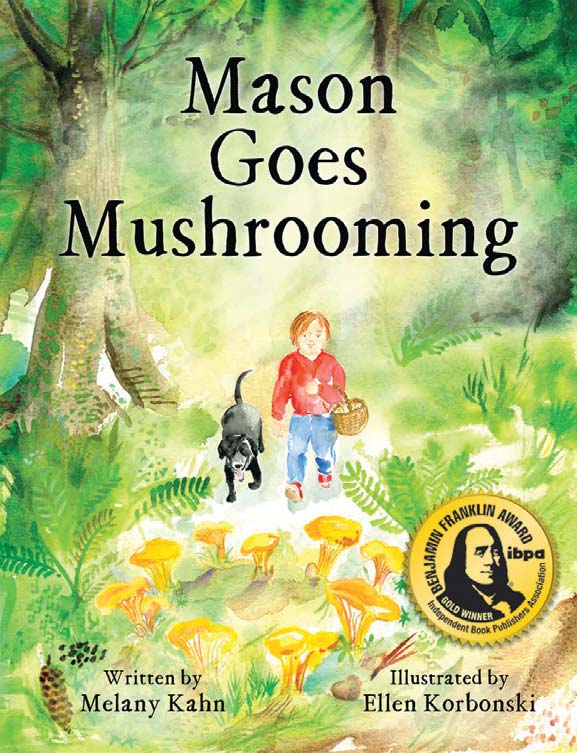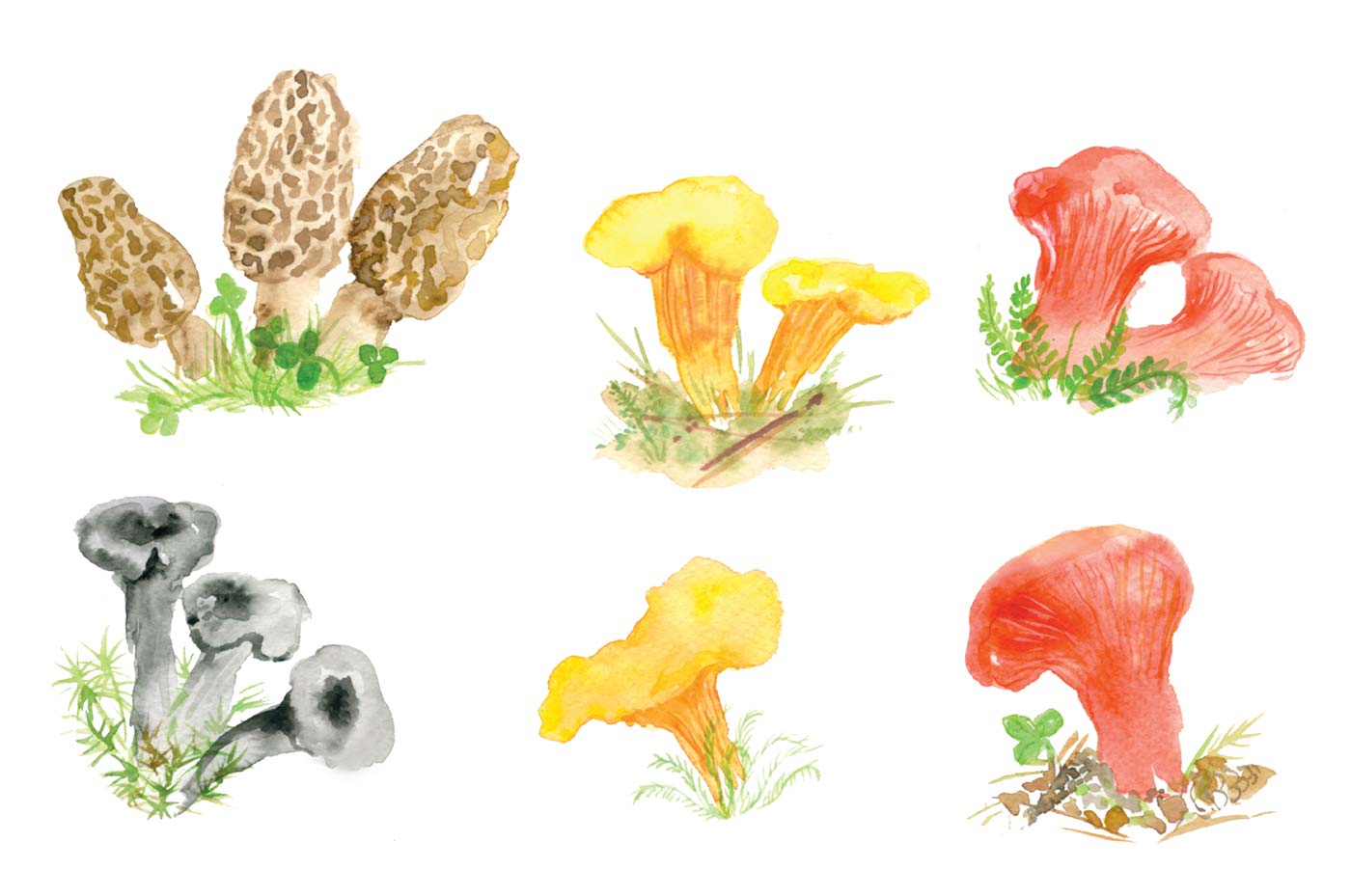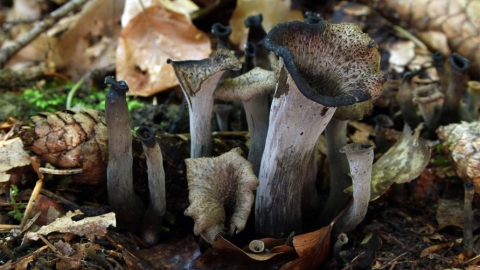Mushroom Foraging
In Vermont we are exceedingly fortunate to have an abundance of the earth’s treasures at our fingertips. ’Tis the season to forage, pick, preserve, and cook.

Mason Goes Mushrooming is a perfect read for kids—and adults might pick up a few tips as well!
When I was growing up on our farm in West Brattleboro, my parents took me on fantastic, woodland treasure hunts for delicious wild mushrooms. Morels in spring, summer giving way to chanterelles, lobster mushrooms, and black trumpets. My mom and dad were nutty amateur mycologists; Mom even insisted on being buried with shiitake spores thrown in the dirt on her mountainside grave so she could come back—as a mushroom. Eventually, I took my own children foraging, and these experiences led me to write my children’s book, Mason Goes Mushrooming. The story follows a boy (my son!) and his four-legged pal, Buddy, on their hunts for edible mushrooms through lush Vermont landscapes.
But wait! Why in the world would anyone want to forage and cook up wild mushrooms, especially with young children?
Because…at their essence, mushrooms teach us about connectivity. Connectivity is what fuels our desire to maintain the planet and our communities as we know them. As with cooking and sharing a meal together, mushroom foraging brings us closer to one another. Opening oneself up to experiencing a mushroom’s actual environment is at the heart of foraging. It helps us recognize how essential and generous mushrooms are to the human race. Without fungi, we wouldn’t exist. Fungi decompose and enrich our soil; make our beer; proof our bread; and ferment our yogurt.
The best way to learn to hunt for mushrooms is in the “oral tradition” with foragers who are happy to share their knowledge.
Now, I am not advocating that folks randomly pick wild mushrooms. Instead, I am highlighting that mushroom education is available and worth pursuing. My experience sharing mushroom education nationally confirms that the appetite for fungi education, especially edible foraging, appears insatiable. Fortunately, mycophiles have created a welcoming community for both newbie and expert mycologists.
The best way to learn to hunt for mushrooms is in the “oral tradition” with foragers who are happy to share their knowledge. I recommend that folks join the North American Mycological Association (NAMYCO) or their local mushroom club; also keep an eye out for weekend foraging events at nature centers, farms, or social media groups. The bonus: After the treasure hunt (and exercise!), you could walk out with a basket full of delicious umami-flavored mushrooms and a plethora of new friends.
If you have cooked wild mushrooms, you already know that flavors come alive when seared like a good steak, nicely browned yet still juicy on the interior. The simplicity of a dash of oil or butter in a cast-iron pan over medium heat and a sprinkle of sea salt (and not too much stirring!) will reveal the nuances of each species.
And, if you are just getting curious, Mason Goes Mushrooming includes four beginner mushrooms (the same ones my parents showed me) and four easy recipes to get started on your culinary fungi adventure. In each recipe, wild can be swapped with the cultivated varieties found in farmers’ markets. Or, skip the ubiquitous white buttons and forage in the supermarket section for lion’s mane, enoki, or brightly colored oyster mushrooms. You can even buy and rehydrate packages of dried porcini or morels and make your pasta really sing. The fantastic world of fungi awaits, and many of us are eager to share our love of foraging with you.







